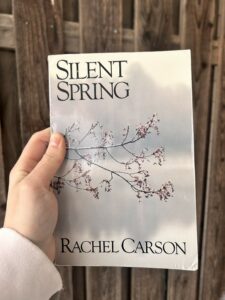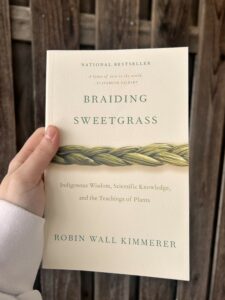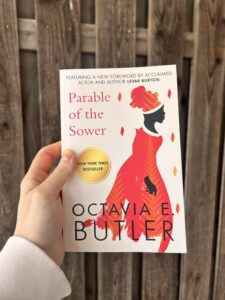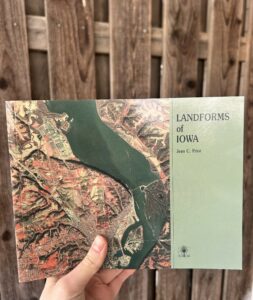Women’s Voices in Environmental Literature

By Avery Merkley, Iowa Trails Field Crew Member / AmeriCorps Member
Reading about nature and the environment can help foster a deeper understanding of the world around us and our place within it. Whether you pick up a nonfiction essay on climate change, a novel with environmental themes, or a collection of animal themed poetry, you can develop a new appreciation for nature, and maybe even see the world in new ways.
To celebrate women’s history month, I compiled a list of four books that explore plants, wildlife, conservation, and climate change. These work’s have informed and inspired conservation efforts and paved the way for women’s voices in the environment.

Silent Spring by Rachel Carson
Carson’s Silent Spring is a well known environmental classic, and for good reason. This book is considered responsible for the eventual ban of the pesticide DDT in the United States. By documenting the harm caused by indiscriminate use of DDT, Carson not only awakened readers to the immediate crisis of careless pesticide use, but she also helped the public to recognize many ways the planet was being degraded by mankind. Silent Spring has a very important legacy of bringing awareness to the fact that nature is highly vulnerable to human actions. Following this book, the need to protect the environment was widely accepted, spurring on environmental movements and increased attention to ecological issues. Despite its publication in the 1960s, Silent Spring’s themes of biodiversity loss and disregard for the natural world feel just as relevant today.
 Braiding Sweetgrass by Robin Wall Kimmerer
Braiding Sweetgrass by Robin Wall Kimmerer
As a botanist and member of the Citizen Potawatomi Nation, Kimmerer explores her Indigenous heritage and scientific background in Braiding Sweetgrass. Throughout the pages, Kimmerer takes personal experiences and connects them to a specific species or natural phenomenon, such as leeks, squash, and salamanders. As a result, readers can begin to increasingly recognize how themselves and their actions cannot be separated from an impact on the Earth. Kimmerer embraces the notion that plants and animals are our oldest teachers, and we should acknowledge and appreciate the reciprocal relationship we share with everything in nature.
 Parable of the Sower by Octavia E. Butler
Parable of the Sower by Octavia E. Butler
Octavia Butler’s Parable of the Sower, published in 1993, is a dystopian fiction classic that recounts the life and experiences of Lauren Olamina, beginning in 2024. At the time of its publication, Parable of the Sower was solely a work of speculative fiction set in a future ravaged by greed, poverty, and climate change. Reading this book in the mid 2020s provides a unique perspective, as it allows the reader to compare and contrast Butler’s themes with our present day realities. While this book does not directly address the environment as obviously and consistently as the others on this list, Parable of the Sower heavily explores the indivisible nature of climate change and social injustice.
 Landforms of Iowa by Jean C. Prior
Landforms of Iowa by Jean C. Prior
Jean C. Prior began working with the Iowa Geological Survey in 1965, later becoming the senior research geologist. In 1991, she published Landforms of Iowa, building an important bridge between scientific discovery in academia and the general public. By creating a concise and informative account of Iowa’s geologic history, readers can connect their surficial surroundings with a deeper history. In the preface, Prior writes, “to take the time to show others something of interest in their surroundings is to give a gift for life.” Prior acknowledged that understanding of geological processes is vital to being responsible land and water stewards.
This list is by no means exhaustive, and represents only a tiny share of great women writers whose work explores nature. History shows that women have long explored the natural world on page with rich diversity in perspective, voice, and styles.